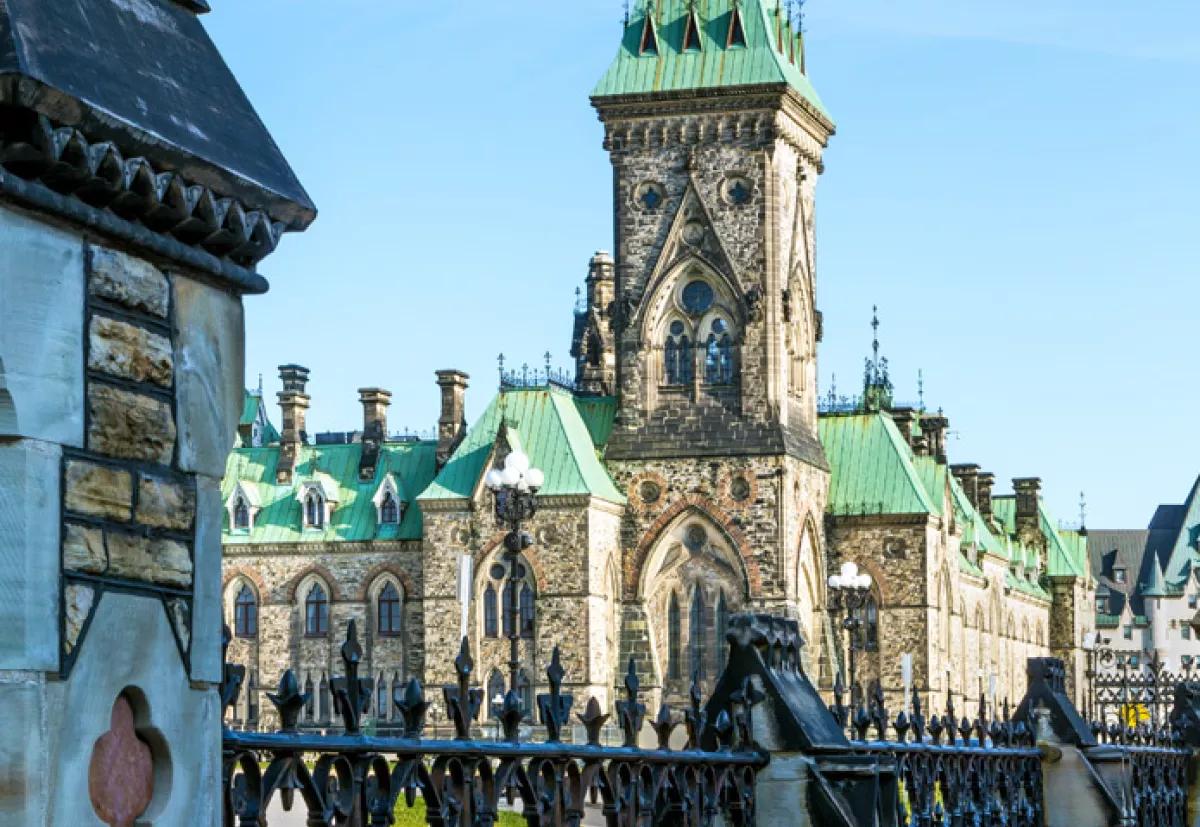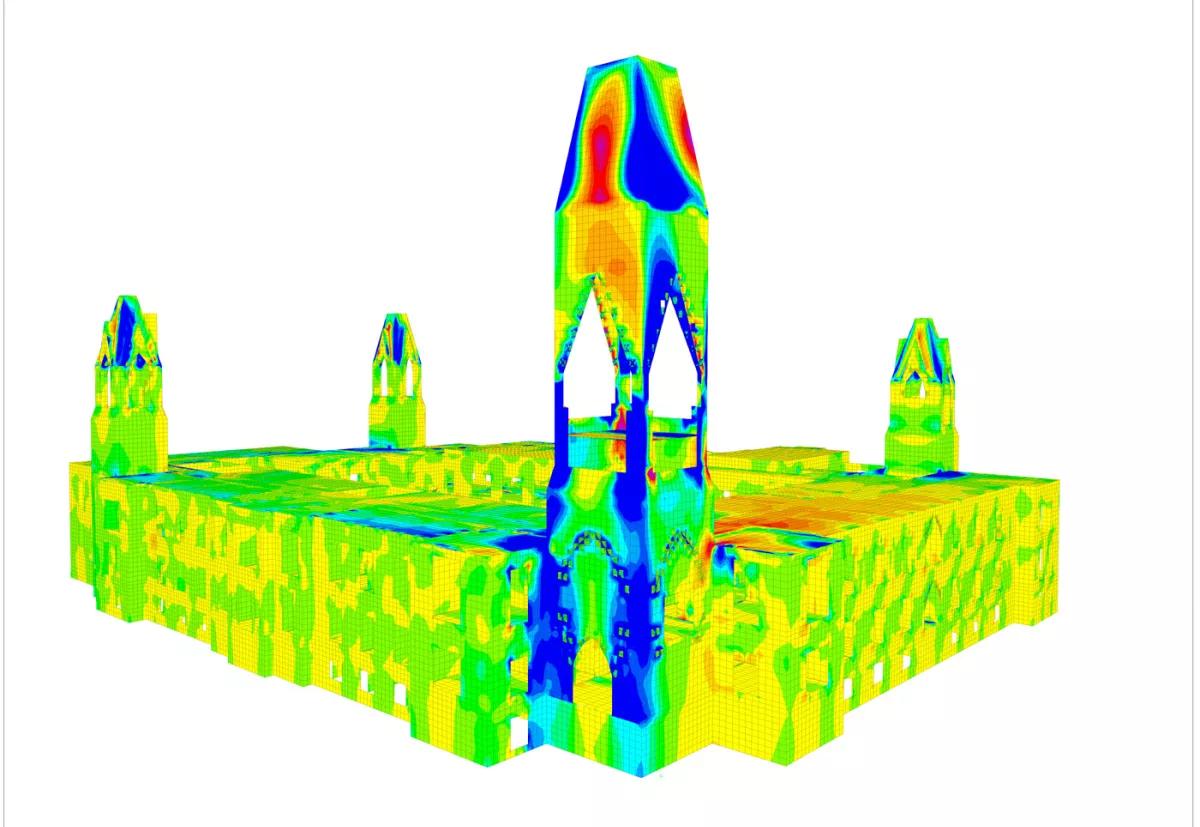
The East Block, the oldest of the three Parliament buildings, holds the highest heritage value due to minimal alterations. Built in 1867 with a major addition in 1910, its exterior and interior are of significant heritage value. The 1867 Wing features Fox and Barrett floors supported by load-bearing stone and brick
masonry. The 1910 Wing shares a similar exterior composition.
The project evolved into a seismic study of the building for the future major rehabilitation project as well as developing and implementing repairs to the exterior envelope in 4 key critical areas of the building. The main challenge in the seismic upgrade study was determining the least intrusive method for seismic strengthening of the building. Upgrading an unreinforced rubble stone masonry structure with significant heritage value required careful analysis of its structural capacity. Discontinuity in Fox & Barrett (F&B) floors posed seismic challenges. Different modelling techniques were tested on smaller models before conducting two analyses: a traditionally reinforced and a base-isolated building. Minimal intervention was prioritized using all available analytical tools.
Seismic upgrades and interventions had to respect the heritage value of finishes - this was achieved through regular design meetings and peer reviews. Unknown conditions were addressed through localized site investigations and comprehensive solutions by the design team.
*Completed as Ojdrovic Engineering.
DFS Architects and Architecture49


